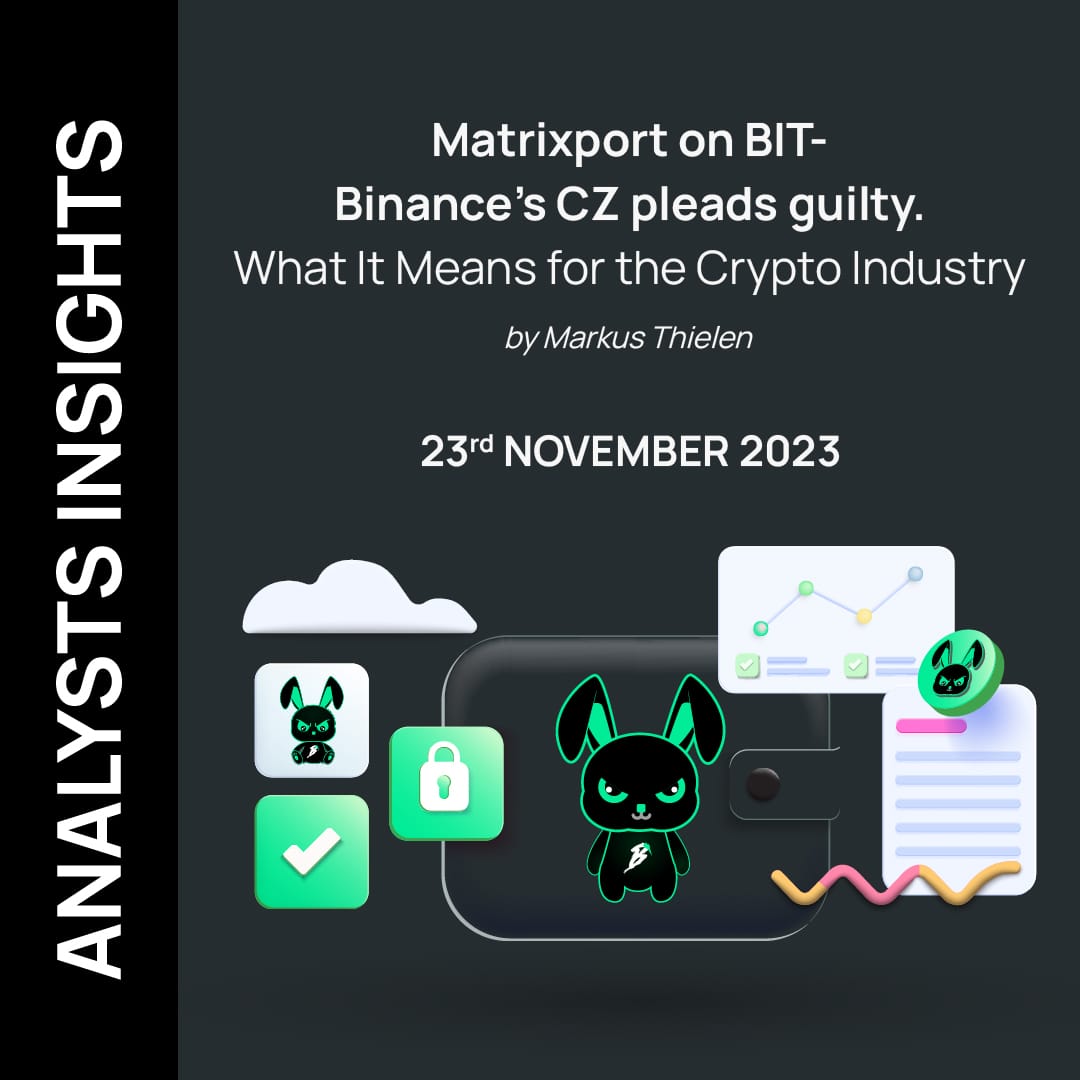Analysts' Insights

Matrixport on BIT - Binance’s CZ pleads guilty. What It Means for the Crypto Industry
- by Markus Thielen
Binance CEO CZ pleads guilty and agrees to pay $50m fine, while Binance will pay $4.3bn. CZ’s sentencing is delayed by six months, and he faces a maximum sentence of 10 years. He has agreed to waive his right to appeal if the sentence does not exceed 18 months. Ahead of the settlement, on-chain data revealed that Binance transferred $3.9bn USDT between its wallets.

Binance is charged with money laundering violations, conspiracy to conduct an unlicensed money-transmitting business, and US sanctions violations. Transactions worth $898m fall into this category. Binance collected $1.35bn in trading fees from US customers.
The deal includes an agreement with FinCEN, OFAC, and CFTC, which will receive $1.8bn, and he cannot operate a business for the next three years. This could open the door for him to rejoin Binance as a clean operator.
Binance's Future Path
US agencies have not accused Binance of misappropriating any user funds, nor was Binance alleged in any market manipulation. With CZ stepping down and the fine less than the $10bn feared, Binance will likely remain a top-three exchange over the next 2-3 years. There will likely be pressure to ‘right-size’ the company with 6,000 employees. While this plea deal does not include the SEC, this is a very favourable outcome for CZ and Binance itself, with the only surprise being how quickly these agencies moved after the FTX/SBF trial was out of the way.
Some would argue that the US agencies have cleaned up the industry this year by dismantling the US crypto-related banks, as two of them were running an internal ledger that crypto companies could use 24/7 to transfer fiat. Arguably, few (perceived) major actors are left, and with Bitcoin only declining -3.4% during the last 24 hours, the market is stomaching a major risk-off event.
Regulatory Impact, Catalyst for Bitcoin Spot ETF Expectations
The result will likely be that more exchanges will enhance their compliance programs and become part of a surveillance-sharing agreement, which will be instrumental in approving a spot Bitcoin ETF in the US. Rather than comparing the trading volumes between centralised and decentralised exchanges, the volume between regulated and non-regulated cryptocurrency exchanges might become the most important metric to monitor in 2024.
With this plea deal, the expectations for a spot Bitcoin ETF might have increased to 100% as the industry will be forced to follow the rules that TradFi firms must follow. More importantly, this industry's whitewashing will strengthen the Bitcoin adoption case for institutional players and will likely become a safe-haven asset in investors’ portfolios.
Next month, the FTX exchange will likely be sold and run by a US securities law-compliant management team, which could re-launch the exchange by Q3 2024. There could be $24-50bn in inflows into any US-listed Bitcoin ETF, and we are already seeing crypto firms making markets on CME-listed crypto derivatives. There will be a shift from unregulated wild-west exchanges that serve retail investors to fully regulated and compliant venues that serve institutions.
The institutions are coming, and all the enforcement actions by the US agencies this year are a step in this direction. As the macro-environment continues to be a tailwind with the demand from institutions, 2024 will likely be another rocking year for Bitcoin — CZ might come back during the next bear market in 2026.
Written by Markus Thielen, Head of Research & Strategy at Matrixport. Author of Crypto Titans.
Join now for more insights around crypto!

Industry views and information shared do not represent Matrixport's position and do not constitute any investment advice.

